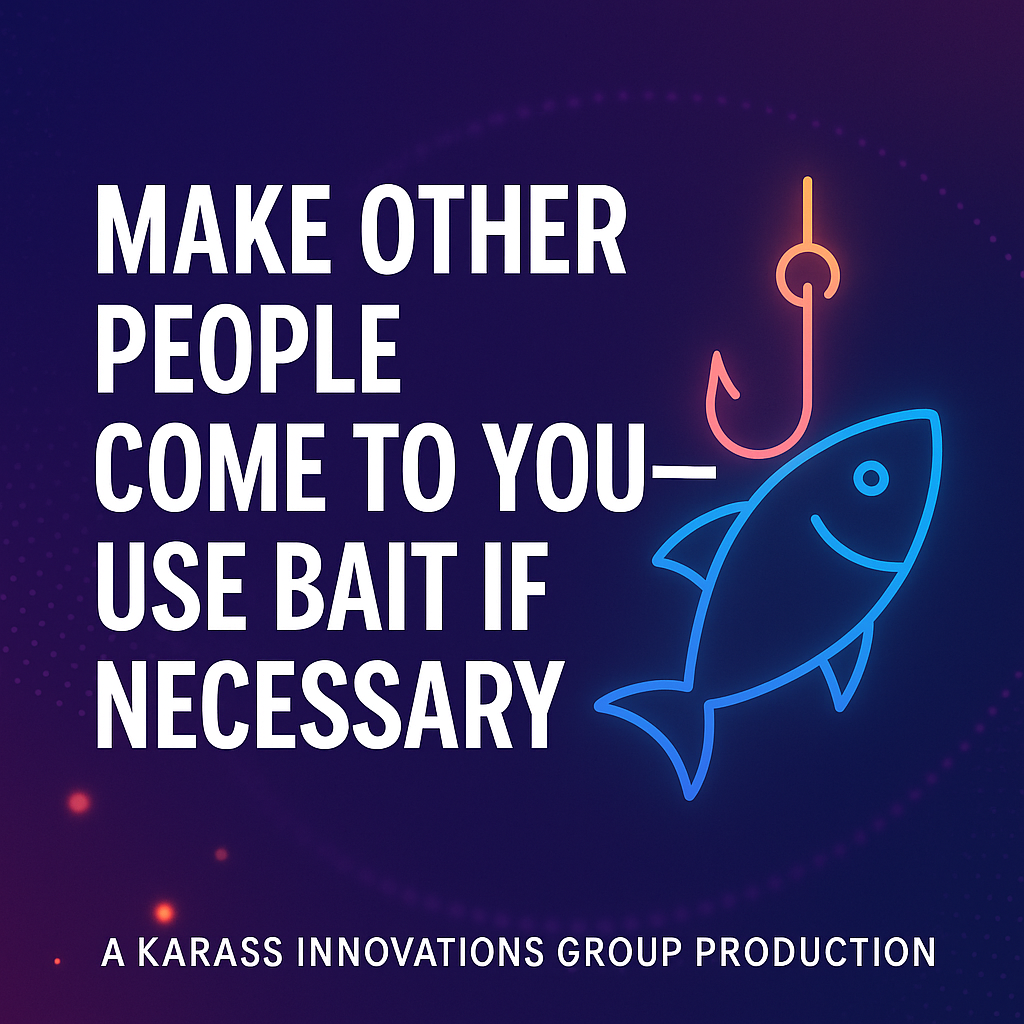Make Other People Come to You—Use Bait if Necessary
You are the prize. Make others come to you instead of chasing after them. By establishing your own value, you create an environment where people are motivated to seek you out. This positions you as the authority, putting you in a position of strength where you can dictate terms and expectations.
Industry Trends and Leadership Insights: “Make Other People Come to You—Use Bait if Necessary”
Based on Law 8 from The 48 Laws of Power by Robert Greene
In manufacturing and supply chain, leaders are increasingly embracing authority positioning to attract clients, talent, and strategic partners. Instead of cold-pitching or price-cutting, organizations are creating value-rich ecosystems—such as knowledge centers, benchmarking tours, and proprietary technology platforms—that act as magnets. According to Deloitte’s 2024 Global Manufacturing Outlook, 61% of manufacturers are now investing in customer experience and knowledge-based differentiation to drive inbound interest, a shift away from transactional selling. The bait is insight, exclusivity, and demonstrable operational excellence.
In the medical and healthcare sectors, authority positioning is driving both patient trust and institutional collaboration. Leading hospital systems are publishing research and treatment outcomes to draw patients to them rather than relying solely on referrals or advertising. Telemedicine platforms like Mayo Clinic and Cleveland Clinic have seen surges in engagement not by chasing patients, but by making expertise highly accessible and visibly authoritative. A 2023 Health Affairs study showed that patients are 47% more likely to choose providers who publish educational or clinical content tied to their specialty.
In engineering and science-based industries, the “come to us” dynamic is reshaping recruitment and innovation culture. Rather than aggressively pursuing every patent or partnership, leading firms are hosting innovation challenges, incubator competitions, and open-source collaborations that draw top talent and ideas into their orbit. Companies like Siemens and Lockheed Martin have adopted "innovation-as-bait" models, offering access to simulations, prototyping tools, or exclusive R&D grants to those who engage. This reinforces their position as hubs of influence, attracting contributors rather than chasing them.
In education, elite institutions and thought leaders are increasingly creating content ecosystems—MOOCs, exclusive executive programs, and research journals—to draw students, sponsors, and faculty toward them. Harvard, MIT, and Stanford maintain strong gravitational pull not through outreach but through perceived intellectual capital and cultural prestige. A 2024 UNESCO report found that 70% of global learners are more likely to engage with institutions that are seen as intellectual authorities, regardless of geographical proximity.
Finally, in marketing and professional services, demand generation has shifted toward attraction-based models. Content marketing, strategic storytelling, and personal branding are now key leadership tools. According to HubSpot’s 2024 State of Marketing Report, companies that emphasize inbound marketing (thought leadership, SEO, and gated content) generate 3x more leads at 62% less cost than those relying on outbound efforts. Leaders who craft a compelling, consistent narrative are positioning themselves as trusted resources—forcing opportunity to come to them. This cultural shift fosters confidence, reduces desperation, and cultivates selective, high-value engagement across sectors.

